Rugby

The term ‘rugby’ covers both the major codes, rugby union and rugby league. Hospital records often do not specify which type of rugby an injured person was playing.
An estimated 316,000 Australians aged 15 and over played rugby in 2020–21 (ASC, 2021). There were 5,030 injury hospitalisations attributed to rugby—4,300 male and 730 female. For those aged 15 and over, the rate of hospitalisations was about 1,200 per 100,000 participants.
Following a dip in 2019–20 related to COVID-19 lockdowns, rugby injury hospitalisations in 2020–21 rebounded higher than in 2018–19? (Figure 1).
Figure 1: Trend in rugby injury hospitalisations, by sex, 2011–12 to 2020–21
For more detail, see data tables B3–4.
The highest number of hospitalisations was in the 15–19 age group (Figure 2).
Figure 2: Age distribution of rugby injury hospitalisations, 2020–21
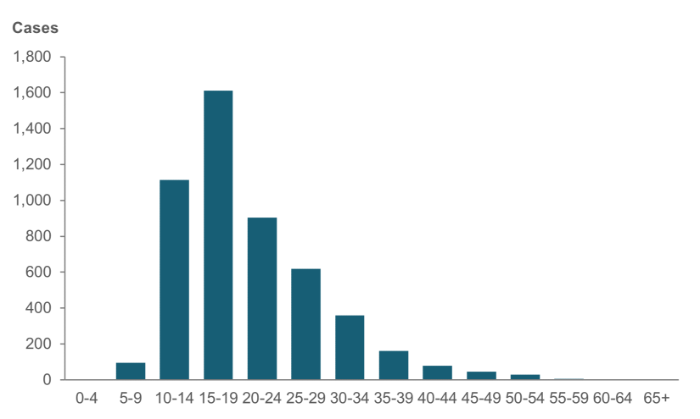
Source: AIHW NHMD.
For more detail, see data table A14.
Just over half of these injuries were fractures (53%), and another 18% were soft-tissue injuries (Figure 3).
Figure 3: Rugby injury hospitalisations, by type of injury as a proportion, 2020–21
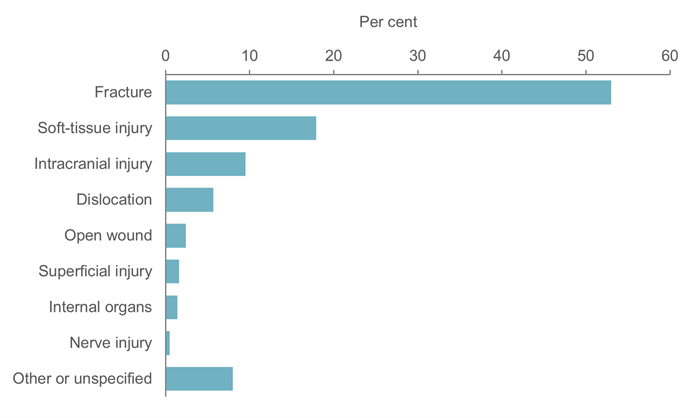
Note: Type of injury is derived from the principal diagnosis.
Source: AIHW NHMD.
For more detail, see data table A25.
There were 460 hospitalisations for concussion, 390 male and 73 female.
The main injury was most often to the head or neck (29%), followed by the leg or hip (25%) (Figure 4).
Figure 4: Rugby injury hospitalisations, by body part injured, as a proportion, 2020–21
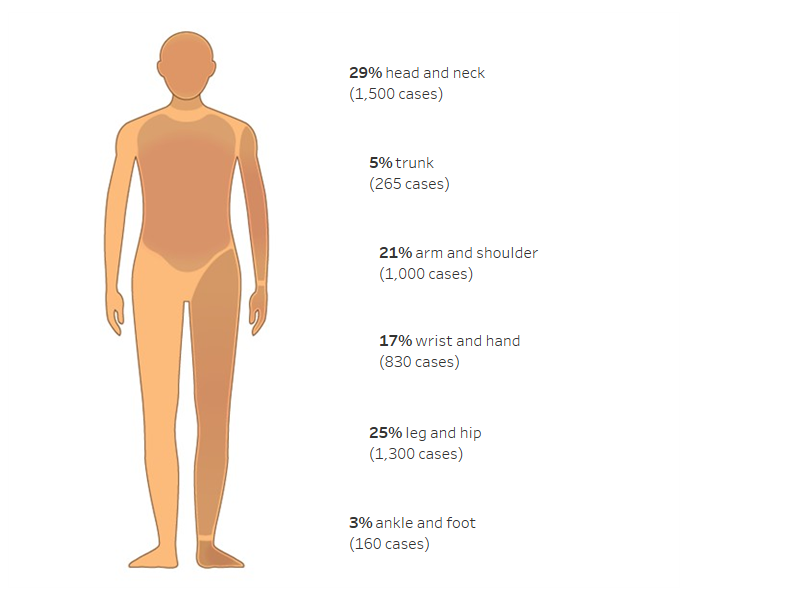
Notes
1. Body part injured is derived from the principal diagnosis.
2. ‘Trunk’ includes thorax, abdomen, lower back, lumbar spine & pelvis.
Source: AIHW NHMD.
For more detail, see data table A26.
Where it was specified, the cause of injury was most often either ‘falls involving another person’ (48%) or ‘contact with another person’ (32%). (Figure 5).
Figure 5: Cause of injury as a proportion when specified, rugby injury hospitalisations, 2020–21
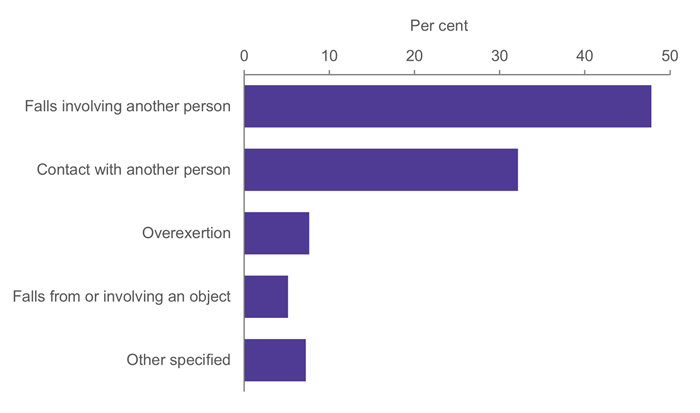
Source: AIHW NHMD.
For more detail, see data table A27.
Seasonal differences
Because rugby is a winter sport, injury hospitalisations are usually highest between March and August. The interruption caused by COVID-19 is evident in the drop from March 2020 (Figure 6).
Figure 6: Rugby injury hospitalisations by month of admission, 2017–18 to 2020–21
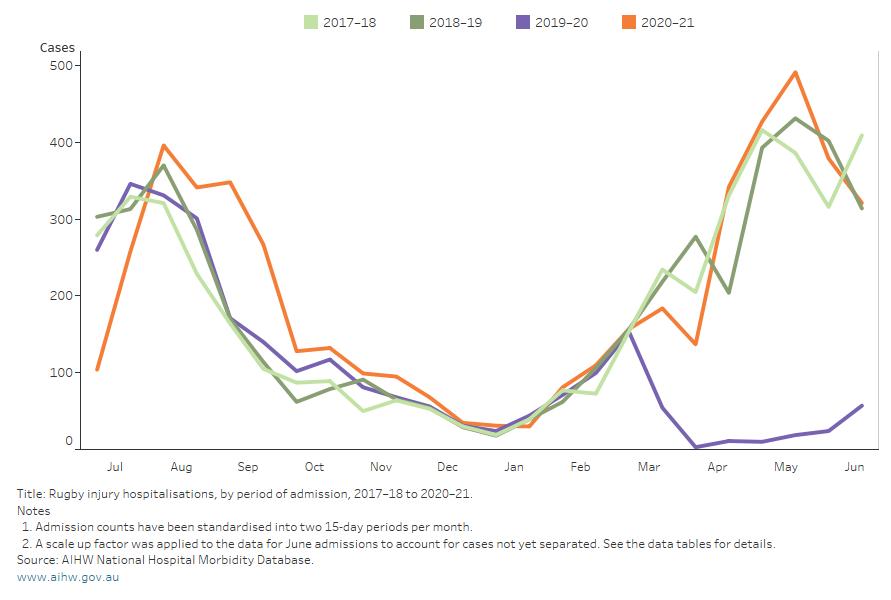
For more detail, see data table B3.


